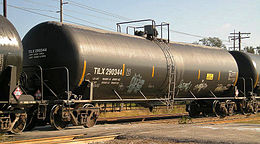 BISMARCK, N.D. (AP) – The abrupt decline in oil prices stands to be bad news in North Dakota, a state that has reaped billions in tax revenue as new drilling techniques made it the second-leading producer in the U.S. behind Texas. But a lot of factors will determine how great that impact is.
BISMARCK, N.D. (AP) – The abrupt decline in oil prices stands to be bad news in North Dakota, a state that has reaped billions in tax revenue as new drilling techniques made it the second-leading producer in the U.S. behind Texas. But a lot of factors will determine how great that impact is.
PRICE TRIGGERS
North Dakota’s petroleum industry could see a big tax cut if crude continues to slide, and if that happens, it means the state will be missing out on billions of dollars. One of the state’s two taxes on wells is a 6.5 percent extraction tax. A state law forgives that tax if the five-month average price of a barrel of oil slips below a “trigger” price. Legislators first endorsed the concept in the mid-1980s, during a time of depressed oil prices.
The current trigger is $52.58 a barrel based on prices for West Texas Intermediate, the U.S. benchmark set at Cushing, Oklahoma.
WTI was at about $54 a barrel on Friday after spending much of December around $60.
North Dakota is banking on $8.3 billion in oil tax revenue when the next budget cycle begins on July 1. But if the monthly average price stays below the trigger for five consecutive months, North Dakota’s tax revenue could drop an estimated $5.3 billion, Tax Commissioner Ryan Rauschenberger said. But he called the trigger “a difficult standard to meet.”
Once it is, though, the average monthly price would have to be exceeded for five straight months before the extraction tax resumes.
Gov. Jack Dalrymple’s budget plan released this month assumes North Dakota sweet crude will fetch $74 when the next budget cycle begins and $82 when the biennium ends on June 30, 2017. Oil prices have mostly outpaced projections during the current two-year budget cycle.
Another price trigger would cut the extraction tax sharply as an incentive to keep companies drilling new wells when they might otherwise go idle. Rauschenberger said that trigger, which only needs to average $55 for a month, would cost the state about $160,00 in lost revenue for each well drilled, though the trigger is due to expire this summer.
Oil revenues play a relatively small part – about 3.6 percent at present- of the state’s general fund, which finances state government and a variety of programs. North Dakota’s general fund can take in no more than $300 million in oil tax revenues per two-year budget cycle. But the general fund also is financed by taxes on income and sales, which also would be affected by depressed oil prices.
RIG ACTIVITY
North Dakota oil drillers produced 1.18 million barrels of oil a day in October, down about 4,050 barrels daily from September. That was the first time in eight months the state didn’t set a monthly record.
The state had 181 rigs operating on Friday, down seven from a year ago. State Mineral Resources Director Lynn Helms said the number of rigs could fall by 50 rigs by mid-2015 if oil prices continue to fall. But he also believes the possible slowdown is “a blip in the long-term scheme of things.”
Ron Ness, president of the North Dakota Petroleum Council, said he expects as least as many rigs as Helms to be idled if crude prices continue downward.
“I don’t predict oil prices,” Ness said. “But I do know if the prices continue to drop, there will be a significant drop in the number of drill rigs and the number of jobs out there.”
Ness, whose group represents more than 500 companies working in the oil patch, said each active oil rig represents about 40 direct jobs and 80 indirect jobs in the state.
DEJA VU?
While no one is whispering bust in North Dakota, the state has seen them before, with the last major one in 1986. North Dakota crude was between $3.40 and $8 a barrel in 1999, when the state had no rigs drilling wells for the first time since oil was discovered in the state in 1951.
In December 2008, and about two years after North Dakota’s current boom began, oil was fetching only about $30, a gigantic nosedive and a five-year low from the still-record $136.29 in July that year.
The swing of more than $100 in 2008 led to a roller coaster climate that made planning difficult for oil companies. But prices rebounded and the state produced about 79.7 million barrels of oil in 2009, up from the record 62.8 million barrels set the year before.
North Dakota now matches the record set in 2008 in about two months and the record set in 2009 in less than three months.
BULLISH ENVIRONMENTALISTS
Ironically, few people are as bullish on North Dakota oil production as those most critical of the industry.
“Oil is not going anywhere in North Dakota. Extraction will continue and prices will go back up again – that’s what oil does,” said Don Morrison, executive director of the Dakota Resource Council, an environmental-minded landowner group.
Sierra Club spokesman Wayde Schafer and Morrison, a former budget and tax analyst for the state, see a bright side to the slowdown. They say it can allow the state to catch up on infrastructure and other needs caused by the state’s unprecedented oil bonanza. It also would allow regulators to keep better tabs on oil development, they said.
“I’m seeing a slowdown as a plus for North Dakota,” Schafer said. “Maybe a slowdown will give us an opportunity to do it right.”












Comments are closed
Sorry, but you cannot leave a comment for this post.